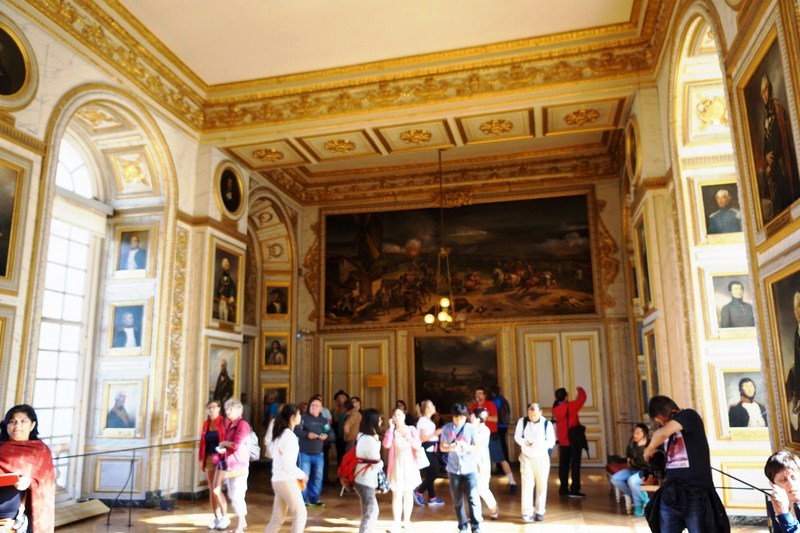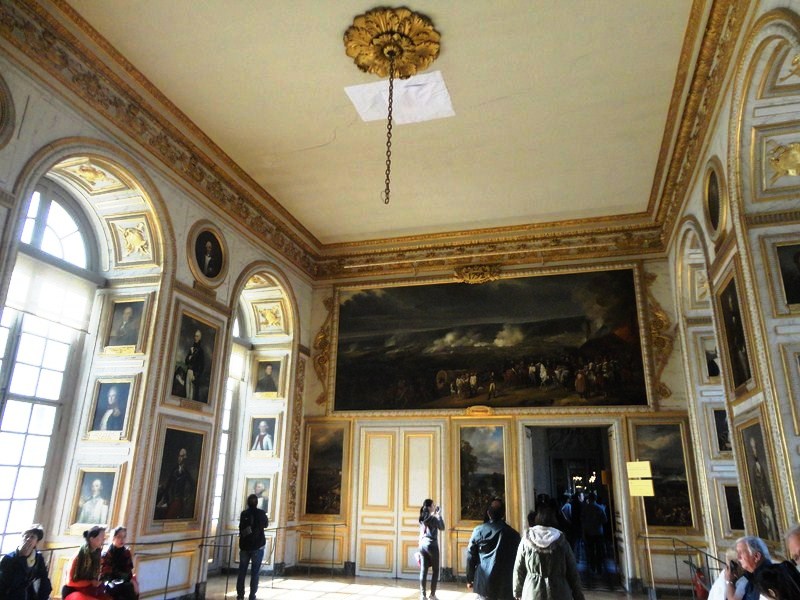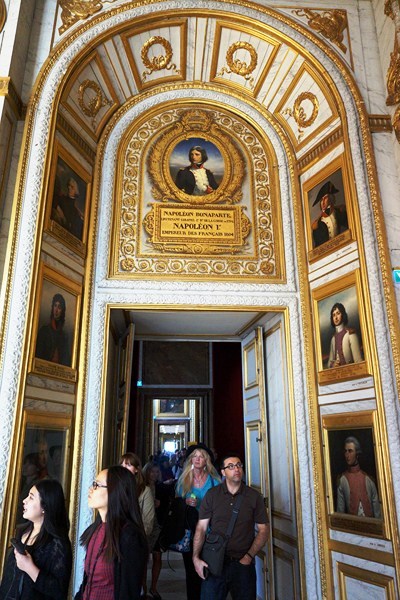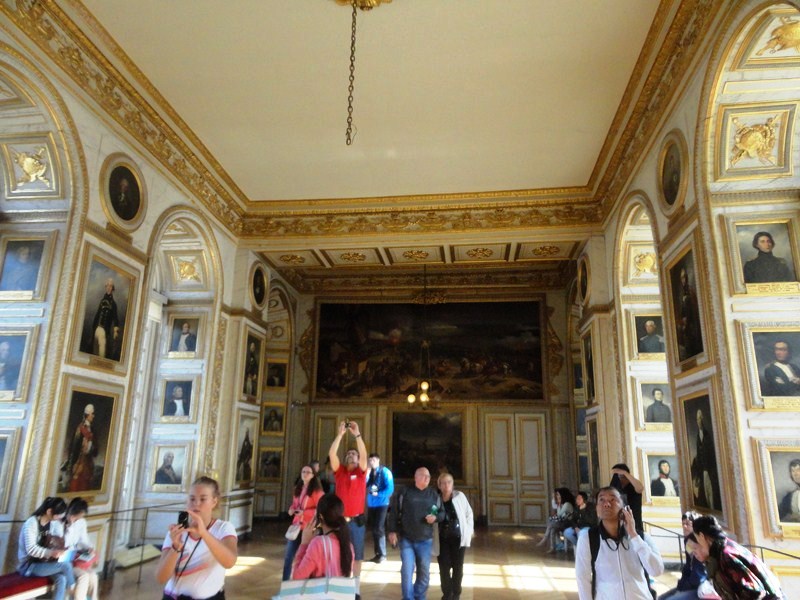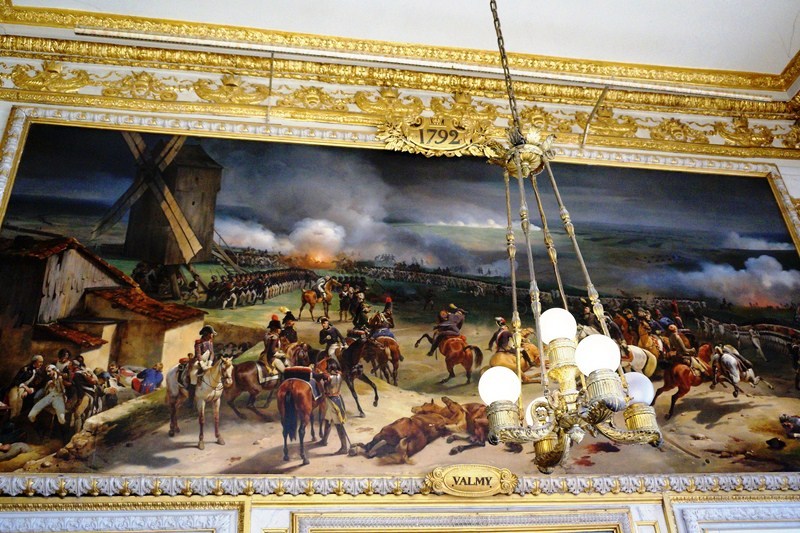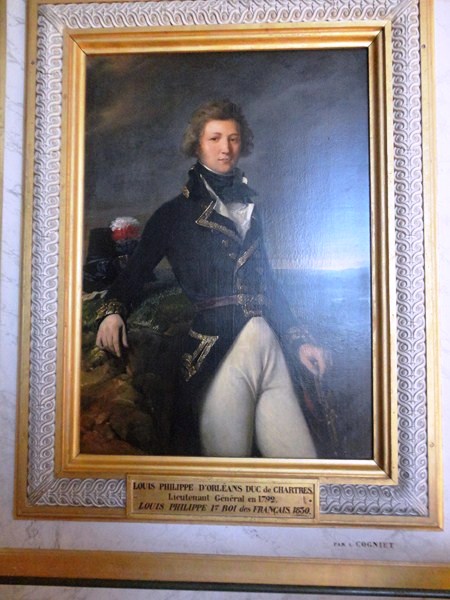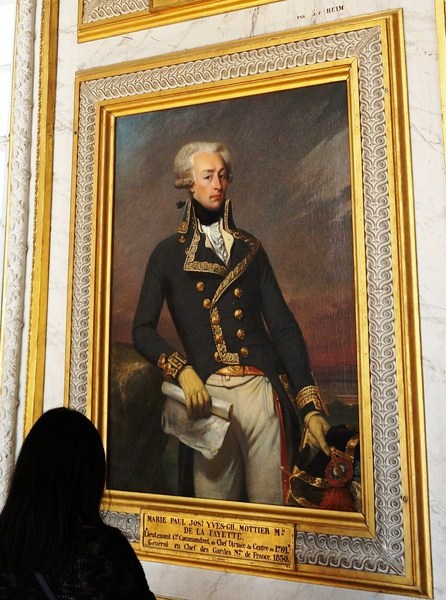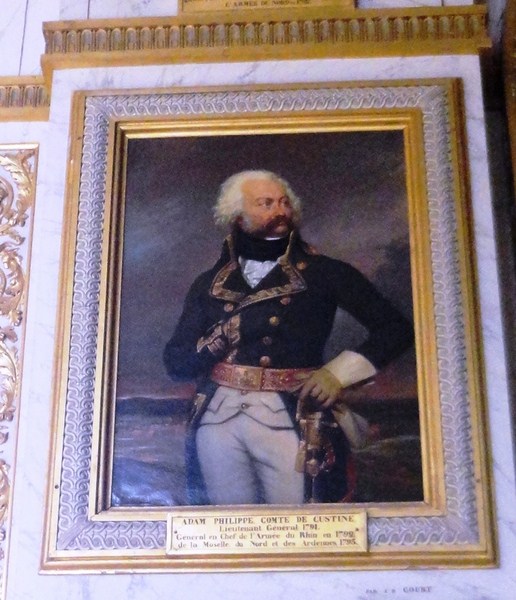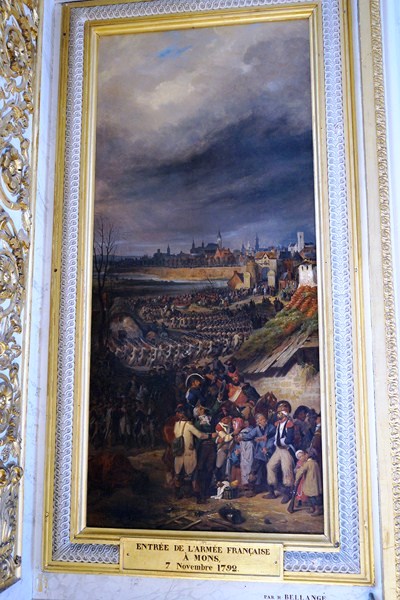The 1792 Room, a transition room in the Versailles Palace devoted to September 1792 (a pivotal year of the French Revolution) when the Republic was proclaimed, was developed for the History of France Museum from what had formerly been known as the Room of the Merchants of the Court during the reign of Louis XV.
Check out “Versailles Palace“
It presages the messages of the Gallery of Battles and, beyond it, the 1830 Room, in a trilogy that represents King Louis Philippe’s response to the Hall of Mirrors built by his ancestor, Louis XIV, surrounded by the War and Peace Rooms.
Check out “Versailles Palace – Hall of Mirrors” and “Versailles Palace – Grand Gallery”
The only remnant of the rooms that Louis-Philippe I devoted to the French Revolution, it offers the keys to understanding the king’s political and historic project.
The 1792 Room marks both the end of a world (the French monarchy fell on August 10, 1792) and the beginning of a new era full of hopes as well as worries as the European monarchies were united against France, which found, within itself, the driving forces that would unite to defend it.
In this room, there are paintings of some of the most emblematic battles of the Revolution that evoke the call to arms to defend “the imperiled nation.”
They include the September 20, 1792 Battle of Valmy (Mauzaisse after Horace Vernet, 1826) and the November 6, 1792 Battle of Jemappes (Henry Scheffer after Horace Vernet, 1821) in which Louis-Philippe I (then known as the Duke of Chartres), participated along with his younger brother Antoine Philippe (the Duke of Montepensier). There’s also The National Guard of Paris Leaves to Join the Army in September 1792 by Léon Cogniet.
Louis-Philippe I also gathered portraits of the many military commanders and heroes of the Revolutionary Wars and Empire Wars, wearing the uniforms and badges of their ranks, who led France to victory such as François Christophe de Kellermann, Charles François Dumouriez, Nicolas Luckner, are featured alongside veterans of the American Revolutionary War Jean-Baptiste Donatien de Vimeur, comte de Rochambeau and Gilbert du Motier, Marquis de Lafayette.
Lining the archways around the windows are portraits of young officers who would become future generals and marshals of the Consulate and the Empire while above the entrance, the portrait of a young Napoleon has pride of place.
There is a subtle hierarchy between the portraits, with King Louis-Philippe I presenting himself as a Revolutionary fighter (being a participant in the two abovementioned battles), heir of the Enlightenment and a proponent of new ideas.
1792 Room: Chateau De Versailles, Place d’Armes, 78000 Versailles, France. Tel: +33 1 30 83 78 00. Website: www.chateauversailles.fr. Open daily (except on Mondays and May 1), from 9:00 AM to 6:30 PM. Last admission is 6 PM while the ticket office closes at 5.45 PM. The estate of Trianon and the Coach Gallery only open in the afternoon while the Park (7 AM to 8:30 PM) and Gardens (8 AM to 8.30 PM, last admission: 7 PM) are open every day. Access to the Gardens is free except on days of fountains shows. You can access the estate of Trianon through the Gardens or through the city. The Petit Trianon is only possible via the Grand Trianon.
Admission: 27 € for Passport with Timed Entry (days with Musical Fountains Shows or Musical Gardens), 20 € for Passport with Timed Entry (without musical fountains show or musical gardens), 12 € for Estate of Trianon ticket(without Musical Fountains Show or Musical Gardens), 10 € for Passport with Timed Entry (free admission, days with Musical Fountains Show or Musical Gardens), 9,50 € for Musical Fountains Show ticket, 8,50 € for Musical Gardens ticket, 28 € for the Fountains Night Show.
How to Get There: The cheapest option for reaching Versailles is by train. There are three train stations in Versailles. RER line C arrives at Versailles Château – Rive Gauche train station, the closest one of the Palace (just 10 minutes’ walk to the Palace). SNCF trains from Gare Montparnasse arrive at Versailles Chantiers train station, which is 18 minutes on foot to the Palace. SNCF trains from Gare Saint Lazare arrive at Versailles Rive Droite train station, 17 minutes on foot to the Palace. RER C and SNCF train times are available on www.transilien.com.

